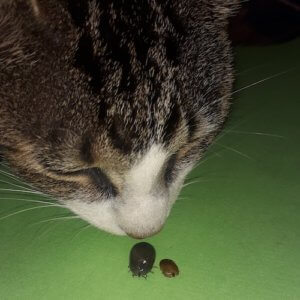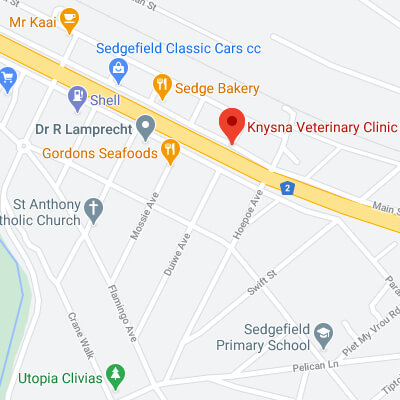Sterilisation. It’s a topic well known to any pet owner. In females we call it “spaying”, or ovariohysterectomy. In males, it’s called neutering, castration or orchidectomy.
In this post, we’re going to explain what happens when your pet is sterilised. Then we’ll answer some questions that pet owners often ask about these procedures when they’re visiting the practice for routine health checks and vaccinations.
Here’s How Spaying (Ovariohysterectomy) Works
This procedure involves administering a general anaesthetic, and then surgically removing the uterus and both ovaries in a female.
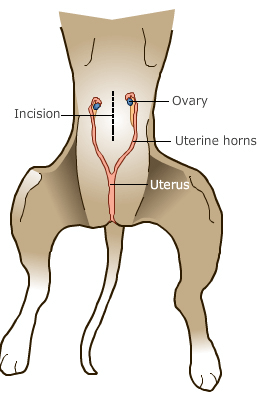
On admission, you may be advised a pre-anaesthetic blood test to ensure that your pet is healthy and fit for a general anaesthetic. This test is optional, but strongly recommended with older patients. Once we are happy to go ahead with the surgery, your pet will receive a pre-medication that lightly sedates her. She will be under general anaesthetic for the whole procedure, at the end of which we administer pain relief so that she can wake up feeling fairly comfortable.
Here’s How Castration (Orchidectomy) Works
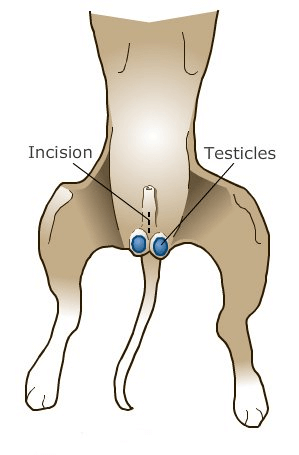
This procedure involves administering a general anaesthetic, and then surgically removing both testicles in a male. An incision is made just in front of the scrotum and the scrotal sac is left intact.
The admission and general anaesthetic procedure is the same as for females (see above).
10 Most Commonly Asked Questions
1. At what age do you recommend I sterilise my pet?
Most vets will recommend sterilising when the patient is 6 months or older.
- This age is considered the best because the patient hasn’t reached sexual maturity yet, but he/she is old enough to be safely anaesthetised.
- Sterilisation can be done at a much younger age, especially in rescue centres where there’s a heavy focus on population control.
- Sterilisation can be done at any age after 6 months old. Even geriatric pets qualify!
We generally recommend sterilisation at 6 months of age.

2. Should I wait until my female had her first heat/season before sterilising?
Spaying her before hormones play a role reduces her chances of developing mammary tumours (breast cancer) to virtually zero. Waiting for her to have a cycle or litter of pups provides absolutely no behavioural benefits.
3. What is the recovery time after sterilisation?
Your pet goes home the same day, after a painkiller injection. We give you post-op care instructions on discharge.
- The patient might still be woozy on the first night and may not feel like eating.
- Offer only water and a small dinner of his/her usual food.
- Keep other bouncy, furry friends away from him/her for the rest of the day.
- Keep the environment calm, warm, clean and dry.
The next day he/she should feel much better. The surgical stitches will be removed after 10 to 14 days. During this time, avoid strenuous exercise and swimming.

4. Will sterilisation stop inappropriate urination?
It might. It should at least reduce the frequency of occurrence. If sterilisation is done early, your male dog or tomcat might stop marking his territory (including the house!) altogether, or never even start.
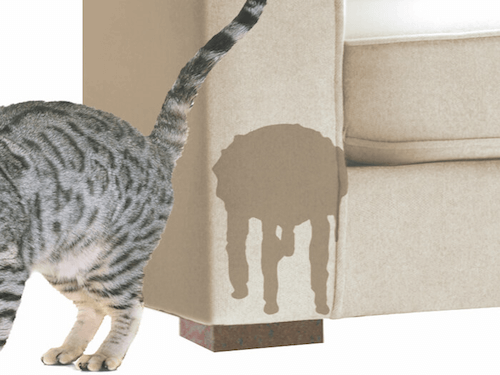
5. Will sterilising help curb aggression?
Castration reduces aggression by reducing testosterone. Behaviour is multi-factorial and is greatly affected by genetics and the environment. Socialisation plays a huge role in behaviour improvement.

6. Will it change his/her behaviour or personality?
Your furry friends were born with a certain personality, mostly determined by their genes. Removing testosterone will make your male companion more relaxed and focussed on you, instead of driven to find a mate for breeding. It will not make him “weak”, a common misconception we find (especially in informal settlements). But it will make him less likely to roam, look for trouble and end up in fights. Females also tend to be more relaxed.
7. Will my cat/dog get fat?
Sterilisation does NOT make your cat or dog fat. Excessive calories and lack of exercise does. Keep in mind that intact pets can also become obese.
Having said that, it’s important to note that your pet’s calorie requirement may change after the procedure and you will need to reduce it accordingly. Now that he/she is not hormone-driven and is more relaxed, exercise also becomes more important. Time to slap those old tekkies on and enjoy some quality time outside!

8. What are the benefits of sterilization?
Firstly, no accidents! Too many unwanted puppies and kittens are dropped off for adoption at our rescue centres.
Secondly, it greatly reduces the risk of mammary (breast) cancer and prevents cancers such as uterine, ovarian and testicular cancer. Castration reduces the chances of prostatic hyperplasia, perianal tumours and perineal hernias due to the reduction of testosterone. Spaying prevents potentially life-threatening conditions of the uterus such as pyometra (infection of the womb) and mucometra.
The benefits far outweigh the risks.
9. What are the disadvantages of sterilisation?
The procedure involves a general anaesthetic. In young and healthy animals, general anaesthesia is nowadays considered far safer than it was many years ago. In geriatric or ill pets, general anaesthesia carries a higher risk. Pre-anaesthetic blood tests are recommended in especially old or sick pets.
A small percentage of females sterilized before their first heat, especially larger breed bitches, may develop urinary incontinence. This is due to a weaker bladder sphincter in the absence of oestrogen. This condition is not life threatening and is in most cases very well managed medically.
10. Are there any alternatives to surgical sterilization?
Chemical sterilisation. This involves hormonal treatments in the form of injections or implants administered during a consultation. This option together with its pros and cons is best discussed at length with your vet.

So there you have it – the inside scoop on sterilisation! We hope that we could answer some questions and help bust some of those common myths surrounding these procedures.




